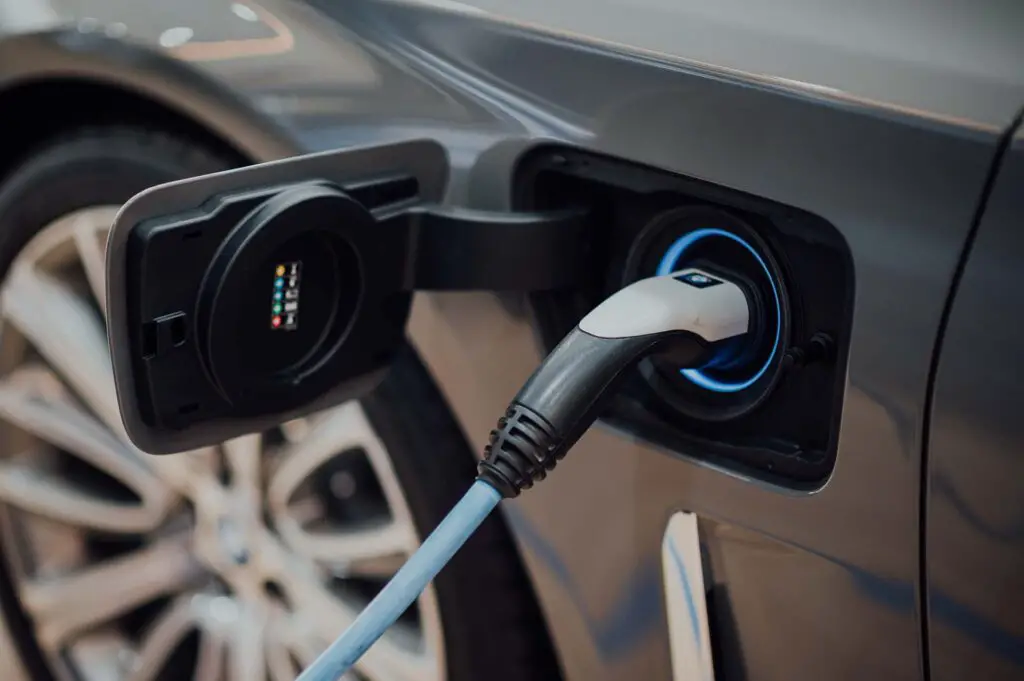Do you get tax credits for buying a used electric car? While the federal spotlight often shines on new EV purchases, the landscape for used electric vehicles (EVs) is evolving, with state and local incentives filling the gap. This guide dives into the perks of joining the electric revolution second-hand – from hidden financial benefits to environmental impacts and beyond.
Do You Get Tax Credits for Buying a Used Electric Car?
As of my last update, federal tax credits for EVs primarily apply to new vehicle purchases. However, some states and local governments offer electric vehicle incentives, including rebates, tax credits, and other benefits like reduced registration fees or access to carpool lanes.
The availability and specifics of these incentives vary by location, so it’s essential to research the programs offered in your state or municipality. These incentives aim to make used EVs more affordable and attractive to buyers, supporting the broader goal of increasing adoption and reducing greenhouse gas emissions.
After all, in the eco-conscious and economically savvy world we live in, EVs are not just a trend – they are the future. But as the upfront cost remains a significant barrier for many, potential buyers are increasingly curious about the financial incentives available, especially for used four-wheelers.

Understanding Electric Vehicle Tax Credits
The EV tax credit is a nonrefundable financial incentive for buyers of eligible electric or plug-in hybrid vehicles, reducing their tax owed but not providing cash back for unused amounts. Starting in 2024, buyers have the option to claim this credit on their tax filings or assign it to a participating dealer, who can then reduce the vehicle’s price or offer a cash benefit equivalent to the credit’s value. So, after you go through all the pros and cons, ensure you check out all the requirements for owning a new four-wheeler.
Overview of EV Tax Credits for New Vehicles
People purchasing new rides have to be prepared for all possible hidden costs. After that, they might be eligible for a tax credit of up to $7,500, while those opting for buying pre-owned electric cars could receive tax incentives up to $4,000.
In a recent change for this year, buyers have the option to apply the credit directly at purchase through the dealer, enhancing the flexibility in utilizing these financial benefits. Nevertheless, the introduction of these changes may present challenges, as stricter criteria for battery production could reduce the number of vehicles eligible for these credits in 2024.
The Shift Towards Used EVs
The shift towards used electric vehicles is driven by several compelling reasons. Consumers are increasingly drawn to pre-owned EVs as a cost-effective alternative to new models, recognizing the significant depreciation that makes these vehicles more affordable.
Additionally, the growing availability of used EVs with reliable performance histories and the expanding infrastructure for electric vehicles enhance their appeal. This trend reflects a broader understanding of the long-term savings on fuel and maintenance, coupled with the desire to contribute positively to environmental sustainability. Considering the current second-hand electric vehicle market, here are the top five most purchased models in the US.
| Model | % of sales |
| Tesla Model 3 | 34.9% |
| Tesla Model Y | 11.9% |
| Chevy Bolt EV | 6.9% |
| Nissan LEAF | 6.2% |
| Tesla Model S | 5.6% |
The Reality of Tax Credits for Used Electric Cars – Changes and Proposals
Purchasers of eligible EVs may receive a tax credit up to $4,000, capped at 30% of the vehicle’s sale price, under certain conditions. These include the vehicle being a plug-in electric or fuel cell model with a minimum battery capacity of 7 kilowatt hours, applicable only to its first resale, and having a sale price of $25,000 or less. Additionally, the vehicle must be at least two years old, weigh under 14,000 pounds, and the credit is claimable once every three years.
Starting from the first day of 2024, vehicles will no longer qualify for a tax credit if their battery components are obtained from countries considered “foreign entities of concern,” such as China, Iran, North Korea, and Russia. This restriction will expand on January 1, 2025, to include essential minerals used in batteries, highlighting the significant impact given China’s dominant position in the supply chain for these minerals.
This new rule has led to a decrease in the number of vehicles that qualify for the tax credit until manufacturers can adjust their supply chains. We will continue to track these changes and provide updates in this article.
Transferring EV Tax Credits at Point of Sale: A 2024 Update
Moreover, from 2024, buyers will have the option to pass their EV tax credit directly to dealers at the time of purchase, which will effectively reduce the purchase price of the vehicle. For this to happen, dealers need to register with the IRS Energy Credits Online and file a “time of sale report” for the EV being purchased.
This allows buyers to transfer their credit at the point of purchase, assuming they meet the Used EV tax credit eligibility criteria. However, if it’s later found that the buyer’s modified adjusted gross income exceeds the specified limits, they might have to repay the IRS.For vehicles bought in 2023, the EV tax credit is applicable only towards your tax due. If your tax amount is below $7,500, you won’t receive the remaining balance as a refund, nor can it be carried over to next year’s taxes. However, starting in 2024, if your tax liability is under $7,500, the IRS has stated it will not pursue repayment for the difference.

Benefits of Buying Used Electric Cars Beyond Tax Credits
Purchasing a used EV presents a multitude of advantages beyond just the allure of tax credits. These benefits span from significant cost savings to notable environmental contributions, highlighting the value of considering a pre-owned EV as a viable option for eco-conscious and budget-aware consumers.
These four-wheelers, whether new or used, boast lower operating costs compared to traditional gasoline vehicles. This is due to several factors, including the lower cost of electricity compared to gasoline, fewer moving parts requiring maintenance, and the absence of oil changes. For used EV buyers, this means the savings continue long after the initial purchase, with reduced costs in fuel and maintenance over the life of the vehicle.
Financial Advantages of Pre-owned EVs
One of the most compelling reasons to buy a used electric vehicle is the financial savings, particularly in terms of EV depreciation benefits and the initial purchase price. New cars typically undergo the most significant depreciation within the first few years of ownership, often losing around 20% to 30% of their value within the first year and around 50% or more over three years.
This steep depreciation curve works to the advantage of used EV buyers, allowing them to purchase a vehicle at a fraction of its original cost while still enjoying many of the car’s modern features and benefits. Moreover, the initial purchase price of a used electric vehicle is substantially lower than that of a new one.
This lower entry price makes EVs accessible to a wider range of buyers, democratizing access to green technology. It also means that buyers can potentially afford a higher-spec model or one with additional features that would have been out of their budget if purchased new.
Environmental and Electric Car Operational Savings
Choosing a used electric vehicle over a new one has distinct environmental advantages. Firstly, it extends the useful life of the electric vehicle, delaying its entry into the waste stream and reducing the demand for new vehicle production. Since a significant portion of an EV’s environmental impact comes from manufacturing, especially the battery, buying used significantly lowers the vehicle’s overall carbon footprint.
Secondly, EVs, in general, have a smaller environmental impact than their gasoline counterparts due to lower tailpipe emissions. This means that even a used EV contributes to reducing the volume of harmful pollutants released into the atmosphere, supporting cleaner air and a healthier environment. EVs produce approximately 4.4 metric tons of CO2 annually, compared to the 11.4 metric tons emitted by gasoline-powered vehicles.

How to Maximize Savings When Buying a Used Electric Car?
To be eligible for a tax credit when purchasing a second-hand EV, the IRS mandates buying from an authorized dealership that both provides necessary information at sale and reports to the IRS. Private transactions, such as those from personal acquaintances or online marketplaces, are not eligible. Starting in 2024, dealers will have the option to apply the tax credit directly at the point of sale, offering buyers immediate financial benefits such as reduced down payments or lower interest on loans.
Tips for Finding the Best Deals on Used EVs
Securing the best deal on a used EV requires a strategic approach, both in finding the right car and negotiating its price. Here are some essential tips to guide you through the process:
Research Market Prices
Before you start shopping, understand the going rate for the make and model you’re interested in. Websites like Edmunds can provide valuable insights into the average price of used EVs in your area, ensuring you have a benchmark for negotiations.
Check for Incentives
Some regions offer incentives for purchasing used EVs, in addition to the incentives for new models. Look into local and state incentives for electric vehicles, as these can significantly reduce the overall cost.
Inspect Battery Health
The battery is the most crucial part of an EV. Ask for the vehicle’s battery health report or have it inspected by a professional. A battery with high degradation may affect the car’s range and overall value.
Look for Certified Pre-Owned (CPO) Programs
Many manufacturers offer CPO programs for used EVs, which include a thorough inspection and a warranty. These vehicles might be slightly more expensive, but the added peace of mind could be worth it.
Expand Your Search
Don’t limit your search to your immediate geographic area. Sometimes, the best deals are found a bit farther from home. Some dealerships even offer delivery services for out-of-state purchases.
Negotiate Based on Total Cost
Focus your negotiations on the total cost of the vehicle rather than the monthly payment. This tactic ensures you get the best overall price and don’t end up paying more in the long run due to interest and fees.
Consider End-of-Month Deals
Dealerships often have sales quotas to meet, which can work in your favor if you shop at the end of the month. Sales staff might be more willing to negotiate to hit their targets.
Driving Towards a Greener Future – The EV Revolution With Tax Credits
This kind of transition represents a significant step forward in reducing our environmental footprint and combating air pollution. With advantages like lower CO2 emissions compared to traditional gasoline vehicles and the absence of tailpipe emissions, EVs offer a cleaner, more sustainable alternative for transportation.
Moreover, evolving incentives, including those for used EV purchases, make EVs an increasingly attractive option for a wider range of consumers. As the infrastructure continues to develop and more states offer incentives to encourage their adoption, the future of driving looks promisingly electric.








